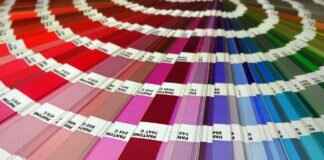This article explores the latest trends in bed design, focusing on innovative styles, materials, and functionalities that cater to modern aesthetics and comfort needs. As the bedroom becomes an increasingly important sanctuary in our lives, understanding these trends can help you create a space that is not only stylish but also functional.
What Are the Current Bed Design Trends?
Staying updated with the current trends in bed design is essential for homeowners aiming to reflect their personal style while enhancing their living spaces. With a blend of aesthetics and functionality, today’s bed designs are more versatile than ever.
Popular Bed Styles in 2023
- Minimalist Bed Designs: Characterized by simplicity, minimalist beds focus on clean lines and a clutter-free look, making them perfect for modern interiors.
- Vintage-Inspired Bed Designs: These designs evoke nostalgia with ornate details and classic materials, appealing to those who appreciate traditional aesthetics.
- Contemporary Designs: Incorporating bold shapes and innovative materials, contemporary beds are ideal for those looking to make a statement.
Innovative Materials in Bed Design
The rise in the use of innovative materials is transforming bed design, enhancing both durability and aesthetic appeal. Key materials include:
- Eco-Friendly Options: Sustainable materials like reclaimed wood and organic fabrics are increasingly popular among environmentally conscious consumers.
- Smart Technologies: Features such as adjustable bases and integrated sleep trackers are revolutionizing how we experience sleep, merging comfort with modern convenience.
Color Trends for Beds in 2023
Color plays a vital role in bed design, influencing the overall ambiance of the bedroom. Current trends include:
- Bold Colors and Patterns: Vibrant hues and striking patterns are making a statement, allowing for creative expression within the bedroom.
- Soft Pastels and Neutrals: These tones continue to dominate, creating serene environments that promote relaxation and tranquility.
Functional Bed Designs for Small Spaces
As urban living spaces become more compact, functional bed designs that maximize space without sacrificing style are increasingly sought after. Notable options include:
- Storage Beds: Featuring built-in drawers or compartments, storage beds offer practical solutions for small bedrooms, helping to keep spaces organized and clutter-free.
- Murphy Beds: Ideal for multifunctional spaces, Murphy beds fold up into the wall when not in use, freeing up valuable floor space.
In conclusion, the latest trends in bed design reflect a harmonious blend of style, functionality, and sustainability. From minimalist aesthetics to innovative materials and smart technologies, there are numerous options available to suit every taste and need. Whether you’re looking to create a tranquil retreat or a bold statement, understanding these trends will help you make informed decisions for your bedroom sanctuary.

What Are the Current Bed Design Trends?
In today’s fast-paced world, the realm of bed design is evolving rapidly, reflecting a blend of functionality, aesthetics, and personal expression. Understanding the current trends in bed design can empower homeowners to make informed choices that not only resonate with their personal style but also enhance their living spaces. This article delves into the latest trends, materials, and functionalities that define modern bed designs.
Current Bed Design Trends emphasize a harmonious balance between style and practicality. Homeowners are increasingly seeking beds that serve multiple purposes while maintaining a chic appearance. This trend is particularly significant as more people are living in smaller spaces, necessitating designs that maximize functionality without compromising on style.
- Minimalism: The minimalist trend continues to thrive, characterized by clean lines, uncluttered designs, and a focus on essential elements. Minimalist beds often feature neutral palettes, allowing them to seamlessly integrate into various bedroom styles.
- Vintage Charm: Vintage-inspired designs are making a comeback, appealing to those who appreciate nostalgia. These beds often boast ornate details and classic materials, adding character and warmth to modern interiors.
- Smart Technology: With the rise of smart home innovations, beds equipped with technology such as adjustable bases and sleep tracking are gaining popularity. These features enhance comfort and cater to the needs of tech-savvy consumers.
Popular Bed Styles in 2023 reflect diverse tastes and preferences. From minimalist designs to vintage-inspired aesthetics, there is a style for everyone:
- Minimalist Bed Designs: Emphasizing simplicity, these beds often utilize materials like metal and wood, contributing to a sleek look.
- Vintage-Inspired Beds: These beds capture a sense of nostalgia, featuring intricate details that evoke a timeless elegance.
Innovative Materials are at the forefront of bed design, as homeowners seek durability and aesthetic appeal. Eco-friendly materials, such as reclaimed wood and organic fabrics, are becoming increasingly popular, appealing to environmentally conscious consumers.
Color Trends for beds in 2023 are diverse, with trending hues influencing overall bedroom ambiance. Bold colors and patterns are making a statement, allowing for creative expression, while soft pastels and neutrals continue to dominate, creating serene environments that promote relaxation.
Functional Bed Designs are essential in today’s compact living spaces. Storage beds, featuring built-in drawers, offer practical solutions for keeping bedrooms organized. Additionally, Murphy beds provide flexibility, folding up into the wall when not in use, freeing up valuable floor space.
In conclusion, understanding the current trends in bed design is crucial for homeowners looking to enhance their living spaces. By choosing styles and materials that reflect personal taste and meet functional needs, individuals can create bedrooms that are not only beautiful but also tailored to their lifestyles.
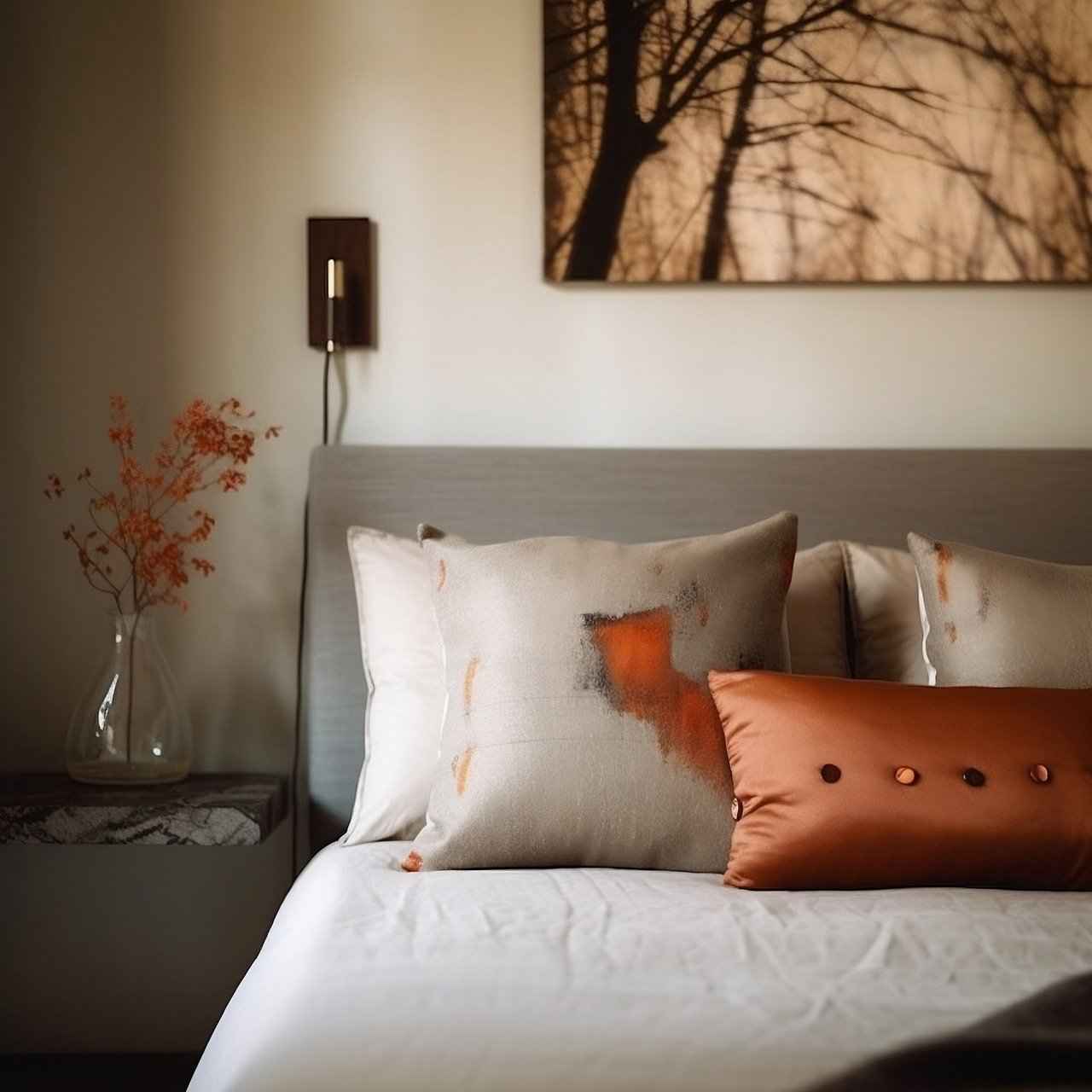
Popular Bed Styles in 2023
In the ever-evolving world of interior design, bed styles play a pivotal role in defining the ambiance of a bedroom. As we delve into 2023, several popular bed styles have emerged, capturing the essence of modern aesthetics while catering to diverse tastes and preferences. This year, we witness a blend of minimalist, vintage, and contemporary designs that not only enhance the beauty of a space but also reflect individual personalities.
Minimalist Bed Designs
Minimalism continues to dominate the design landscape, emphasizing simplicity and functionality. These beds are characterized by clean lines and a lack of unnecessary embellishments. Often crafted from materials like natural wood or metal, minimalist beds create a serene environment that promotes relaxation. The color palettes are typically neutral, featuring shades of white, gray, and beige, which further enhance the calming effect of the bedroom.
Vintage-Inspired Bed Designs
On the other hand, vintage-inspired beds evoke a sense of nostalgia and charm. These designs often incorporate ornate details and classic materials, appealing to those who appreciate traditional aesthetics. Elements such as intricate carvings and rich fabrics are common, allowing homeowners to bring a touch of history into their modern spaces. This style not only serves as a functional piece of furniture but also as a statement of personal style.
Contemporary Bed Designs
Contemporary designs merge sleek lines with innovative materials, creating beds that are both stylish and comfortable. These beds often feature bold colors and patterns, offering a vibrant focal point in the bedroom. The use of eco-friendly materials is also on the rise, with many designers opting for sustainable options like reclaimed wood and organic fabrics. This trend reflects a growing awareness of environmental issues among consumers.
Innovative Materials in Bed Design
As we explore the materials used in bed design, it’s evident that innovation is key. The incorporation of smart technologies is transforming how we experience sleep. Features such as adjustable bases and integrated sleep tracking are becoming increasingly popular, merging comfort with modern convenience. This trend caters to the needs of a tech-savvy generation looking for enhanced functionality in their furniture.
Color Trends for Beds in 2023
Color plays a crucial role in bed design, influencing the overall ambiance of the bedroom. This year, we see a mix of bold colors and soft pastels. While bold hues can create a striking visual impact, soft pastels promote a sense of tranquility and relaxation. This variety allows homeowners to express their personal style while creating a harmonious environment.
Functional Bed Designs for Small Spaces
With urban living spaces becoming increasingly compact, functional bed designs are in high demand. Storage beds are a practical solution, featuring built-in drawers or compartments that help keep the bedroom organized. Additionally, Murphy beds offer an excellent option for multifunctional spaces, folding up into the wall when not in use, thus freeing up valuable floor space.
In summary, the bed styles of 2023 reflect a rich tapestry of design influences, catering to a wide range of tastes and practical needs. Whether you lean towards the simplicity of minimalist designs, the charm of vintage aesthetics, or the innovation of contemporary styles, there is a bed design out there that perfectly suits your needs and enhances your personal sanctuary.
Minimalist Bed Designs
In the realm of contemporary interior design, have emerged as a prominent choice for homeowners seeking elegance and functionality. These designs prioritize simplicity, stripping away unnecessary embellishments to create a serene atmosphere that promotes relaxation and peace. With a focus on clean lines and a restrained color palette, minimalist beds seamlessly integrate into modern interiors.
Minimalist bed designs are defined by their functional aesthetics. Here are some key characteristics:
- Clean Lines: The absence of ornate details allows for a sleek and uncluttered look.
- Neutral Colors: Shades such as whites, grays, and beiges are commonly used to create a calming environment.
- Functional Forms: These beds often feature practical designs that cater to modern lifestyles, such as built-in storage solutions.
When it comes to materials, minimalist beds typically utilize:
| Material | Characteristics |
|---|---|
| Wood | Offers warmth and durability, often with a natural finish. |
| Metal | Provides a modern edge and is often used for its strength. |
| Upholstered Fabrics | Adds comfort and texture, available in various colors and patterns. |
The color palette of a minimalist bed plays a crucial role in the overall aesthetic of the bedroom. Neutral tones are favored for their ability to create a tranquil space. Additionally, these colors can easily complement various decor styles, making them a versatile choice:
- White: Symbolizes purity and simplicity.
- Gray: Adds sophistication while remaining understated.
- Beige: Warms up the space without overwhelming it.
Opting for a minimalist bed design offers several advantages:
- Enhanced Space: The simplicity of the design allows for more open space, making small bedrooms feel larger.
- Timeless Appeal: Minimalist designs never go out of style, ensuring long-term satisfaction.
- Easy Maintenance: The lack of intricate details makes cleaning and upkeep simpler.
To effectively incorporate a minimalist bed into your bedroom, consider the following tips:
- Choose Complementary Furniture: Opt for simple bedside tables and dressers that match the bed’s aesthetic.
- Focus on Textiles: Use soft, neutral bedding to enhance the cozy feel without adding clutter.
- Limit Accessories: Keep decor minimal to maintain the clean lines and open space characteristic of minimalist design.
In conclusion, minimalist bed designs offer an ideal solution for those looking to create a modern, functional bedroom. By focusing on simplicity, functionality, and a neutral color palette, these beds not only enhance the aesthetic appeal of a space but also contribute to a calming and organized environment.
Materials Used in Minimalist Beds
In the realm of modern interior design, minimalist beds have gained significant popularity due to their ability to blend functionality with aesthetic appeal. The choice of materials plays a crucial role in defining the character and durability of these beds. Understanding the common materials used in minimalist bed designs can help homeowners make informed decisions that align with their style and needs.
Common materials for minimalist beds include:
- Wood: Natural wood is a favored choice for minimalist beds, offering warmth and elegance. Hardwoods such as oak, maple, and walnut are particularly popular due to their strength and durability. The grain patterns in wood also add a unique touch, making each piece one-of-a-kind. Additionally, wood can be treated with various finishes to enhance its longevity and resistance to wear.
- Metal: Metal frames, often made from steel or aluminum, provide a sleek and modern look. They are lightweight yet incredibly sturdy, making them ideal for minimalist designs. The industrial aesthetic of metal can be paired with a variety of décor styles, and its neutral color palette allows for easy integration into any bedroom theme.
- Upholstered Fabrics: For those seeking a softer touch, upholstered beds are an excellent option. Common fabrics include linen, cotton, and velvet, which not only add comfort but also contribute to the overall visual appeal. Upholstered frames can be designed in various colors and textures, allowing for personalization while maintaining a minimalist look.
- Composite Materials: With the rise of eco-conscious design, many minimalist beds are now made from composite materials that combine various substances, such as engineered wood or recycled metals. These materials offer both sustainability and versatility, catering to the environmentally aware consumer.
Each of these materials contributes to the sophisticated aesthetic of minimalist beds while ensuring they remain functional and durable. The choice of material can also affect the bed’s weight, ease of assembly, and maintenance requirements, which are essential considerations for potential buyers.
Furthermore, the construction techniques used in minimalist bed design often emphasize simplicity and efficiency. For instance, many modern beds feature platform designs that eliminate the need for a box spring, allowing for a lower profile and easier access. This design approach not only enhances the minimalist aesthetic but also promotes a sense of spaciousness in the bedroom.
In addition to aesthetics and functionality, the choice of materials also plays a role in the overall environmental impact of the furniture. Sustainable practices in sourcing and manufacturing materials are increasingly important to consumers. Many brands are now focusing on responsibly sourced wood and eco-friendly fabrics, ensuring that their products are not only stylish but also environmentally friendly.
In conclusion, the materials used in minimalist beds significantly influence their design, functionality, and sustainability. Whether opting for the natural beauty of wood, the modern appeal of metal, or the comfort of upholstered fabrics, each material offers unique benefits that cater to various preferences and lifestyles. By understanding these materials, homeowners can make choices that reflect their personal style while enhancing their living spaces.
Color Palettes for Minimalist Beds
When it comes to creating a serene and inviting atmosphere in your bedroom, color palettes play a pivotal role. In 2023, the trend of minimalist bedroom designs continues to thrive, with a strong emphasis on neutral colors such as whites, grays, and beiges. These hues do not just serve an aesthetic purpose; they also enhance the overall calming effect of the space, making it a perfect sanctuary for relaxation.
Neutral color palettes are particularly effective in minimalist designs because they create a sense of spaciousness and tranquility. By using these colors, homeowners can easily achieve a cohesive look that feels both modern and timeless. The subtlety of these shades allows for versatility in decorating, enabling the incorporation of various textures and materials without overwhelming the senses.
Moreover, the choice of neutral tones can significantly influence the mood of the bedroom. For example, soft whites can evoke feelings of purity and simplicity, while cool grays may introduce a touch of sophistication. On the other hand, warm beiges can add a cozy and inviting atmosphere, making the space feel more welcoming. This adaptability is one of the reasons why neutral colors are so popular in contemporary bedroom designs.
Another advantage of using a neutral color palette is its compatibility with various design elements. For instance, a minimalist bed frame in a natural wood finish can beautifully contrast against a soft gray wall, creating a focal point that draws the eye without being too bold. Additionally, incorporating textiles such as bedding, curtains, and rugs in similar or complementary neutral tones can enhance the overall aesthetic while maintaining a sense of harmony.
To further illustrate the impact of color palettes in minimalist bedrooms, consider the following table that outlines popular neutral shades and their psychological effects:
| Color | Psychological Effect |
|---|---|
| Soft White | Purity, Simplicity |
| Cool Gray | Sophistication, Calmness |
| Warm Beige | Cozy, Welcoming |
| Muted Taupe | Stability, Comfort |
In addition to the psychological effects, neutral colors can also enhance the functionality of the space. By keeping the color scheme simple, it becomes easier to incorporate various elements such as artwork, plants, or decorative pieces that can add personality to the room. For instance, a vibrant piece of art can pop against a neutral wall, serving as a statement piece that captures attention without clashing with the overall design.
As you consider your bedroom’s design, remember that a neutral color palette not only promotes a peaceful environment but also allows for personal expression through carefully selected decor. Whether you prefer a minimalist aesthetic or a more eclectic style, these colors can serve as a versatile backdrop that enhances your overall design vision.
In conclusion, the trend of using neutral color palettes in minimalist bedroom designs is not just a fleeting fashion; it is a timeless choice that promotes tranquility and style. By embracing these soothing hues, you can create a bedroom that is not only visually appealing but also a true retreat from the hustle and bustle of everyday life.
Vintage-Inspired Bed Designs
evoke a sense of nostalgia and charm, seamlessly blending the old with the new. These beds often incorporate ornate details, rich textures, and classic materials that resonate with those who appreciate traditional aesthetics. The allure of vintage beds lies not only in their visual appeal but also in the stories they tell, reflecting the craftsmanship of bygone eras.
One of the defining characteristics of vintage-inspired beds is their use of intricate embellishments. From carved headboards to decorative footboards, these beds are designed to be statement pieces in any bedroom. The craftsmanship involved in creating these details often showcases the artistry of skilled artisans, making each bed unique. Common materials include solid wood, wrought iron, and luxurious upholstery, all of which contribute to the bed’s overall charm and durability.
In 2023, vintage bed designs are making a significant comeback, appealing to homeowners looking to create a cozy and inviting atmosphere. These beds often feature soft, muted colors such as pastel blues, dusty pinks, and creamy whites, which can create a serene environment. Additionally, vintage patterns like floral prints or damask can be found in bed linens and upholstery, enhancing the overall aesthetic.
Another trend within vintage-inspired designs is the incorporation of repurposed materials. Many manufacturers are now utilizing reclaimed wood and vintage fabrics, not only to create stunning beds but also to promote sustainability. This approach resonates with environmentally conscious consumers who desire both style and responsibility in their purchases.
Furthermore, vintage-inspired beds are not just about aesthetics; they also offer practical benefits. Many designs come with built-in storage solutions, such as drawers or shelves, allowing for better organization in the bedroom. This functionality is particularly appealing in smaller living spaces where maximizing area is essential.
When considering a vintage-inspired bed, it’s also important to think about the overall bedroom decor. Pairing these beds with antique furniture, vintage lighting fixtures, and soft textiles can create a cohesive look that feels both timeless and modern. Accessories such as throw pillows and blankets in complementary colors can further enhance the vintage charm.
In terms of maintenance, vintage-inspired beds typically require a bit more care to preserve their beauty. Regular dusting and occasional polishing can help maintain the finish of wooden beds, while upholstery may need to be cleaned according to the manufacturer’s guidelines. Investing in quality materials can ensure that these beds remain a cherished part of your home for years to come.
Ultimately, vintage-inspired bed designs offer a unique blend of style, comfort, and history. They provide an opportunity to create a personal sanctuary that reflects individual taste while celebrating the beauty of the past. As trends continue to evolve, these beds remain a beloved choice for those looking to infuse their spaces with warmth and character.
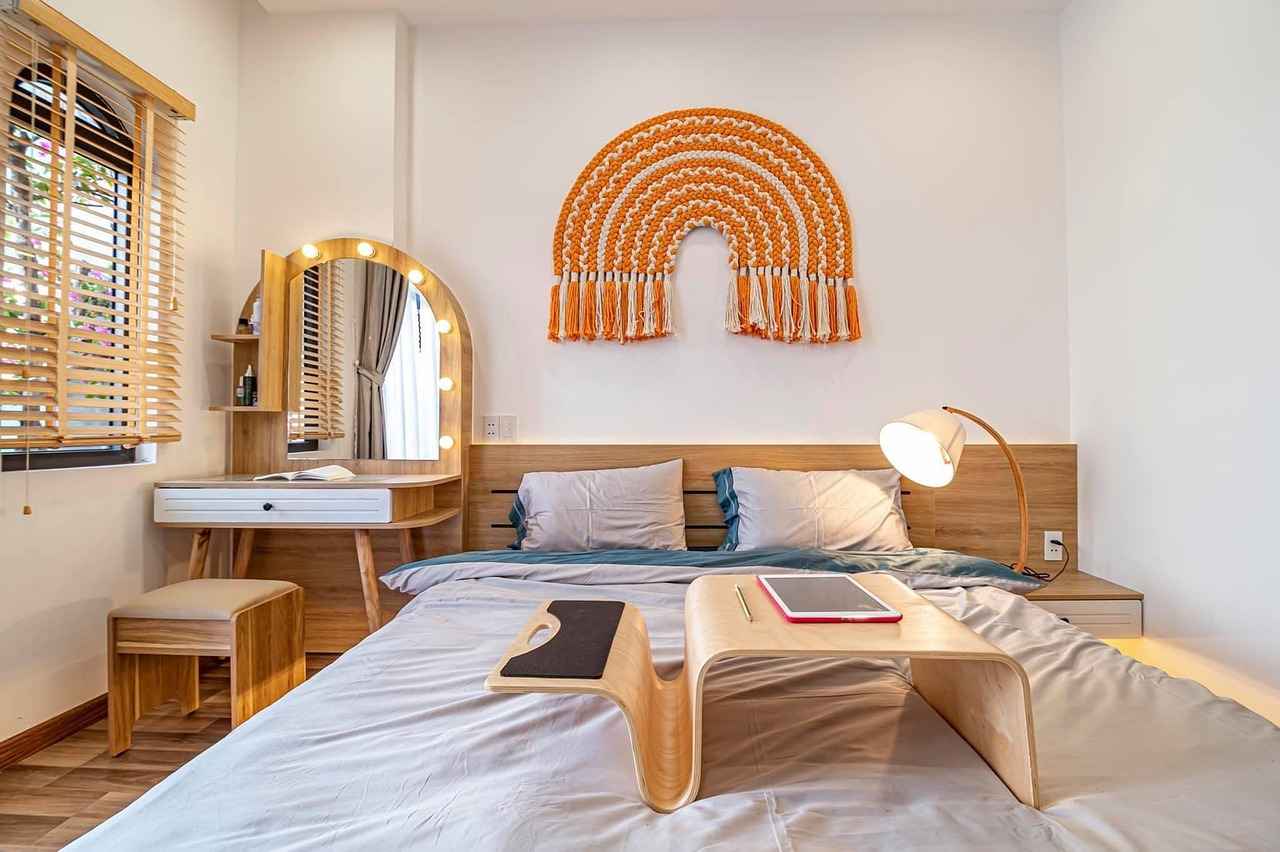
Innovative Materials in Bed Design
are transforming the way we think about sleep spaces, merging functionality with artistic expression. As the demand for unique and personalized bedroom aesthetics grows, designers and manufacturers are increasingly turning to cutting-edge materials that not only enhance durability but also elevate the overall visual appeal of beds.
One prominent trend is the incorporation of eco-friendly materials. With an increasing number of consumers seeking sustainable options, materials such as reclaimed wood, bamboo, and organic cotton are becoming more prevalent. These choices not only minimize environmental impact but also contribute to a healthier indoor atmosphere. For example, beds made from reclaimed wood not only boast a rustic charm but also tell a story, adding character to any bedroom.
Moreover, the rise of smart bed technologies is revolutionizing sleep experiences. These innovations include features like adjustable bases, which allow users to customize their sleeping position for optimal comfort. Integrated sleep tracking technology can monitor sleep patterns, providing insights that help improve sleep quality. This fusion of technology and traditional bed design is paving the way for a new era of personalized sleep solutions.
Another exciting development in bed design is the use of textured materials. Upholstered beds featuring luxurious fabrics like velvet, linen, and leather not only offer comfort but also bring a tactile element to the design. These materials can be used to create stunning visual contrasts, enhancing the overall aesthetic of the bedroom. For instance, a velvet headboard can serve as a striking focal point, inviting touch and admiration.
In addition to textures, the finish of materials plays a crucial role in bed design. Matte finishes lend a modern sophistication, while glossy surfaces can create a sense of elegance and depth. The choice of finish can significantly influence the ambiance of the space, making it essential for homeowners to consider how these elements interact within their overall design scheme.
Furthermore, the versatility of modular designs is becoming increasingly popular. Beds that can be reconfigured or expanded cater to changing needs and preferences, making them ideal for dynamic living environments. This adaptability ensures that beds remain relevant and functional, regardless of lifestyle changes.
As we explore the color trends in bed design, it becomes evident that innovative materials can also impact color choices. Rich, bold hues are gaining traction, allowing homeowners to make a statement and express their individuality. These vibrant colors can be paired with unique materials to create a cohesive and striking design.
In summary, the integration of innovative materials in bed design is not just about aesthetics; it is about enhancing the overall experience of sleep. As designers continue to push the boundaries of creativity and functionality, consumers are presented with an array of options that cater to both their style and comfort needs. By embracing these advancements, individuals can create bedrooms that are not only beautiful but also conducive to restful sleep.
| Material Type | Benefits |
|---|---|
| Reclaimed Wood | Eco-friendly, unique appearance |
| Bamboo | Sustainable, durable |
| Organic Cotton | Non-toxic, breathable |
| Upholstered Fabrics | Comfortable, various textures |
| Smart Technology | Enhanced comfort, sleep tracking |
Eco-Friendly Materials
In today’s world, where environmental sustainability is becoming increasingly important, are at the forefront of design, particularly in the realm of furniture. As consumers become more aware of their choices, the demand for materials that are both stylish and responsible is surging. This shift is especially evident in the bed design industry, where innovative materials like reclaimed wood and organic fabrics are making waves.
Opting for eco-friendly materials not only contributes to a healthier planet but also supports local economies and artisans. These materials are often sourced sustainably, ensuring that they do not deplete natural resources. For instance, reclaimed wood is salvaged from old buildings, reducing waste and preserving the character of the wood, which often features unique grains and textures. This not only provides a beautiful aesthetic but also tells a story, adding depth to the design.
Organic fabrics, such as cotton, linen, and hemp, are grown without harmful pesticides or chemicals, making them safer for both the environment and consumers. These materials are breathable and durable, contributing to a comfortable sleeping experience. Additionally, many organic fabrics are dyed using natural dyes, which further reduces the environmental impact of textile production.
Reclaimed wood is not just an eco-friendly option; it also offers a range of benefits:
- Durability: Reclaimed wood is often more robust than new wood, as it has already weathered various elements.
- Unique Aesthetics: Each piece of reclaimed wood has its own history, providing a one-of-a-kind look that cannot be replicated.
- Carbon Footprint Reduction: By using existing wood, the carbon emissions associated with logging and processing new timber are significantly reduced.
When selecting bedding, consider fabrics that are not only comfortable but also sustainable. Look for certifications such as Global Organic Textile Standard (GOTS) or OEKO-TEX, which ensure that the materials meet stringent environmental and safety standards. Additionally, many companies are now offering bedding made from recycled materials, further enhancing the eco-friendly aspect of your bedroom.
The trend towards sustainability is not just a passing phase; it is reshaping the entire furniture industry. Designers are increasingly incorporating eco-friendly materials into their creations, leading to a variety of styles that cater to different tastes. From modern minimalist designs featuring sleek lines and natural finishes to rustic styles that emphasize the raw beauty of reclaimed wood, there is something for everyone.
As consumers, it is crucial to be informed about the materials used in the products we purchase. By choosing eco-friendly options, we not only enhance our living spaces but also contribute to a more sustainable future. Engaging with brands that prioritize sustainability can lead to a more meaningful connection with our purchases, knowing that we are supporting practices that benefit the environment.
In conclusion, the integration of eco-friendly materials like reclaimed wood and organic fabrics into bed design is a significant trend that reflects a broader commitment to sustainability. As we continue to navigate our choices in home decor, it is essential to embrace materials that not only elevate our living spaces but also protect our planet for future generations.
Smart Bed Technologies
In recent years, the realm of sleep has undergone a significant transformation, largely due to the advent of . These innovations not only focus on enhancing comfort but also integrate advanced features that cater to the modern lifestyle. As we delve deeper into this topic, we will explore how these technologies are reshaping our sleep experience.
Smart bed technologies encompass a range of features designed to improve sleep quality and overall health. One of the most notable advancements is the adjustable bed base. This allows users to customize their sleeping position, providing support for various health conditions such as acid reflux or sleep apnea. The ability to elevate the head or foot of the bed can lead to a more restful night.
Another groundbreaking feature of smart beds is integrated sleep tracking. Many modern beds come equipped with sensors that monitor sleep patterns, heart rate, and even breathing. This data is invaluable for individuals seeking to improve their sleep hygiene. By analyzing this information, users can make informed adjustments to their sleep environment and habits.
Smart beds often come with connectivity options, allowing users to control their bed settings through a smartphone app or voice commands. This level of convenience enables users to adjust their bed’s firmness, temperature, and position without having to leave the comfort of their covers. Imagine waking up in the morning and simply saying, “Adjust my bed to a sitting position,” and having it respond instantly.
In addition to adjustable bases and sleep tracking, many smart beds incorporate temperature control features. These beds can regulate warmth, ensuring that users remain comfortable throughout the night. Some models even offer dual-zone temperature control, allowing partners to set their preferred sleeping temperature individually.
The integration of smart technology into bed design not only enhances comfort but also promotes better health. Improved sleep quality can lead to enhanced cognitive function, emotional well-being, and overall physical health. Furthermore, by providing users with insights into their sleep patterns, smart beds empower them to make lifestyle changes that can further improve their health.
As technology continues to evolve, we can expect even more innovations in smart bed designs. Future models may incorporate artificial intelligence to analyze sleep data and provide personalized recommendations for better sleep. Additionally, advancements in materials and design will likely lead to even more comfortable and aesthetically pleasing options.
Smart bed technologies are revolutionizing the way we experience sleep, merging comfort with modern convenience. As these innovations continue to develop, they promise to enhance our nightly rest, ultimately leading to improved health and well-being. Investing in a smart bed may be a step towards not only a better night’s sleep but also a healthier lifestyle.
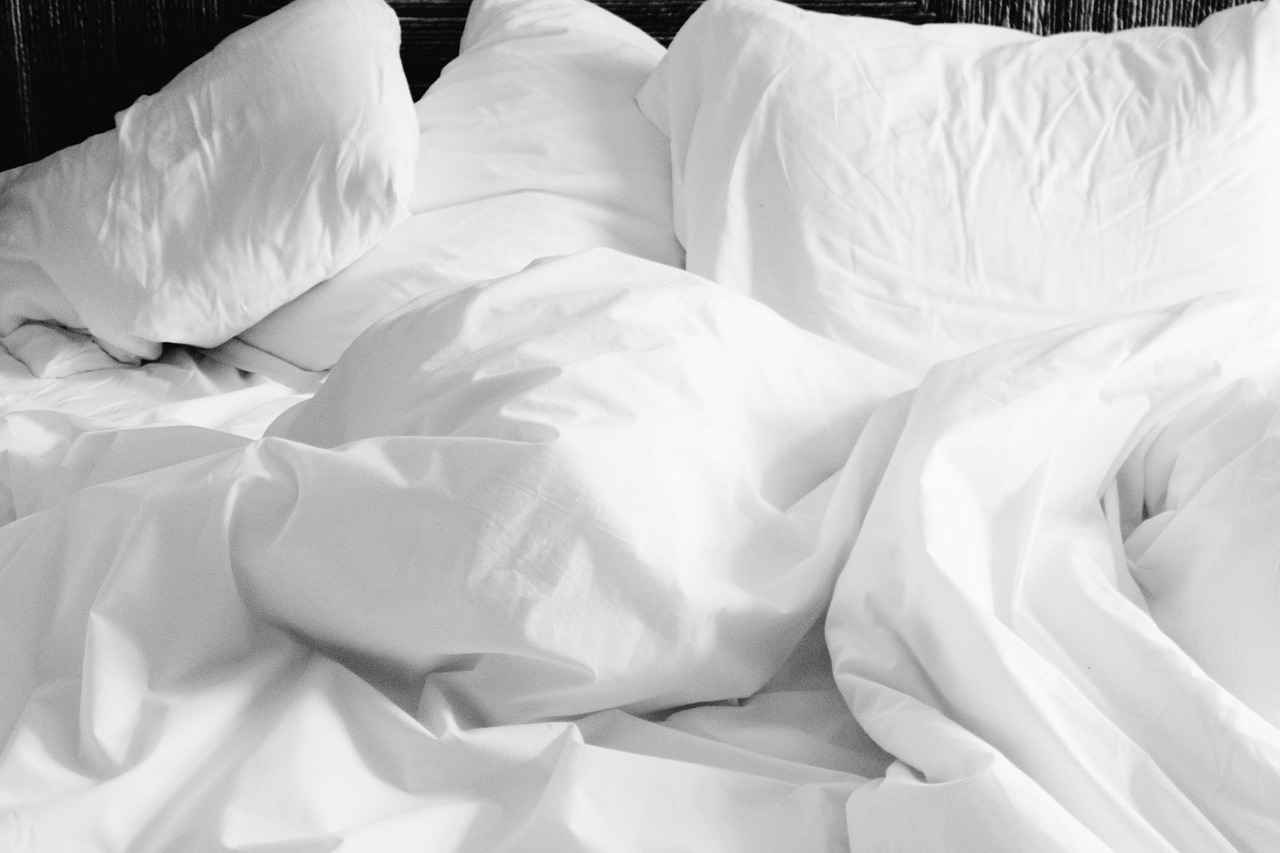
Color Trends for Beds in 2023
Color trends in bed design for 2023 reflect a dynamic interplay between personal expression and the creation of inviting atmospheres. As homeowners increasingly seek to personalize their spaces, the colors chosen for beds play a pivotal role in shaping the overall ambiance of the bedroom. This year, we see a variety of color palettes that cater to diverse tastes, ranging from bold statements to soothing neutrals.
Color is not merely a decorative choice; it profoundly influences mood and perception. Warm hues can evoke feelings of comfort and coziness, while cool tones often promote relaxation and tranquility. Understanding how different colors affect emotions can guide homeowners in selecting the perfect shade for their beds.
In 2023, bold colors are making a significant impact in bed design. Vibrant shades such as deep blues, rich greens, and fiery reds are being embraced as focal points in bedrooms. These colors can transform a simple bed into a statement piece, drawing attention and adding personality to the space.
- Deep Blue: Associated with calmness, this color creates a serene environment while adding depth to the room.
- Rich Green: This hue brings a touch of nature indoors, promoting a sense of balance and renewal.
- Fiery Red: A bold choice that energizes the space, perfect for those looking to make a dramatic statement.
Conversely, soft pastels and neutral tones continue to dominate the color landscape in bed design. These shades, including pale pinks, soft grays, and creamy whites, create a calming atmosphere, ideal for promoting restful sleep.
- Pale Pink: This gentle hue adds warmth without overwhelming the senses, making it a popular choice for a soothing bedroom environment.
- Soft Gray: A versatile neutral that pairs well with various decor styles, gray enhances the feeling of spaciousness.
- Creamy White: Timeless and classic, white beds evoke purity and simplicity, making them a favorite among minimalist designs.
A growing trend is the combination of colors and patterns to create unique and personalized bed designs. Homeowners are increasingly mixing bold prints with softer shades to achieve a balanced yet expressive look. For example, pairing a vibrant floral duvet cover with neutral sheets can add a touch of whimsy while maintaining a cohesive aesthetic.
Seasonality also influences color choices in bed design. As we transition from winter to spring, warmer and brighter colors tend to emerge, reflecting the changing environment. In contrast, autumn often brings deeper, earthy tones that resonate with the season’s natural palette. Homeowners can embrace these seasonal shifts by updating their bed linens and accessories to align with current trends.
In summary, color trends for beds in 2023 highlight the importance of personal expression and the creation of inviting spaces. Whether opting for bold hues or soft pastels, the choices made in bed design can significantly impact the overall atmosphere of the bedroom. By understanding these trends, homeowners can create a sanctuary that reflects their unique style and promotes relaxation.
Bold Colors and Patterns
are transforming the landscape of bed design, allowing homeowners to express their individuality and creativity. In 2023, the trend of incorporating vibrant hues and striking patterns into bedroom decor is not just a fleeting fad but a significant movement that enhances the overall aesthetic of living spaces. This article delves into the impact of bold colors and patterns on bed design, exploring how they can serve as both a focal point and a means of personal expression.
Opting for bold colors in bed design can dramatically change the atmosphere of a bedroom. Bright shades like emerald green, royal blue, and vibrant red can evoke feelings of energy and excitement, making the bedroom a lively retreat. These colors can be used in various ways, from bed linens to headboards, allowing for versatility in design.
Patterns add another layer of creativity to bed design. Whether it’s geometric shapes, floral motifs, or abstract designs, patterns can introduce a sense of dynamism to the space. For instance, a bold floral duvet cover can bring an organic touch to a modern bedroom, while geometric patterns can enhance a contemporary aesthetic. Mixing and matching patterns can also create a unique look, making the bedroom truly one-of-a-kind.
While bold colors and patterns can stand out, it’s essential to maintain a cohesive look throughout the bedroom. Pairing a vibrant bedspread with complementary colors in the surrounding decor can create harmony. For example, if your bed features a bold striped pattern, consider using solid-colored pillows or a throw blanket that picks up one of the colors from the stripes. This approach not only enhances the visual appeal but also ensures that the bed remains the focal point of the room.
Accessories play a crucial role in enhancing bold bed designs. Consider adding decorative pillows in various textures and colors to create depth. A well-placed area rug can also tie the room together, especially if it features similar colors or patterns. Wall art that echoes the bed’s color scheme can further unify the space, making it feel cohesive and thoughtfully designed.
- Personal Expression: Bold colors and patterns allow individuals to express their personal style and preferences.
- Visual Interest: A well-designed bed can serve as a striking focal point, enhancing the overall aesthetic of the bedroom.
- Versatility: Bold designs can easily be updated with new accessories, allowing for seasonal changes without a complete overhaul.
When selecting bold colors for your bed design, consider the overall color palette of your bedroom. It’s important to choose colors that complement each other rather than clash. A color wheel can be a helpful tool in selecting complementary colors. Additionally, consider the psychological effects of colors; for example, blue is often associated with calmness, while yellow can evoke feelings of happiness.
Incorporating bold colors and patterns into bed design is a fantastic way to showcase personal style and create a vibrant atmosphere in the bedroom. By carefully selecting colors and patterns, and ensuring they harmonize with the overall decor, homeowners can transform their bedrooms into unique sanctuaries that reflect their individuality. As this trend continues to evolve, the possibilities for creative expression in bed design are endless.
Soft Pastels and Neutrals
In the world of interior design, color plays a pivotal role in shaping the atmosphere of a space. One of the most prominent trends in recent years has been the use of soft pastel shades and neutral tones. These colors are not just aesthetically pleasing; they also contribute significantly to creating serene environments that promote relaxation and tranquility.
Soft pastels, which include shades like light pinks, baby blues, mint greens, and lavenders, evoke feelings of calmness and peace. These hues are often associated with nature, reminiscent of blooming flowers and clear skies. When incorporated into bed design, they can transform a bedroom into a sanctuary, encouraging restful sleep and rejuvenation. In contrast, neutral tones such as whites, beiges, and grays serve as a perfect backdrop, allowing for versatility in decor while maintaining a soothing ambiance.
- Emotional Impact of Color: Colors can significantly affect our emotions and well-being. Soft pastels and neutrals are known to reduce stress and anxiety, making them ideal for bedrooms, where relaxation is key.
- Versatility in Design: These colors can easily blend with various design styles, from minimalist to bohemian, allowing homeowners to express their personal aesthetic without overwhelming the senses.
- Complementing Textures: The softness of pastel shades pairs beautifully with various textures, such as plush bedding, woven throws, and wooden accents, creating a cozy and inviting environment.
Moreover, the combination of soft pastels and neutral tones can enhance the perception of space. Lighter colors tend to make a room feel larger and more open, which is particularly beneficial in smaller bedrooms. By using these colors strategically, homeowners can create an illusion of depth and space, making their bedrooms feel more expansive and airy.
When it comes to bedding, choosing fabrics in these gentle tones can further enhance the tranquil vibe. Soft cottons, linens, and velvets in pastel colors not only look beautiful but also feel luxurious against the skin. Additionally, layering different shades and textures can add depth to the design while maintaining a cohesive look.
In terms of accessories, incorporating decorative pillows, throws, and artwork in soft pastels can add a pop of color without overpowering the overall aesthetic. These elements can be easily swapped out seasonally, allowing for a fresh look with minimal effort.
Ultimately, the trend of using soft pastel shades and neutral tones in bed design reflects a broader desire for calmness and comfort in our living spaces. As we continue to navigate a fast-paced world, creating a tranquil retreat at home has never been more important. By embracing these colors, homeowners can cultivate a peaceful environment that nurtures relaxation and rejuvenation, making their bedrooms a true haven.
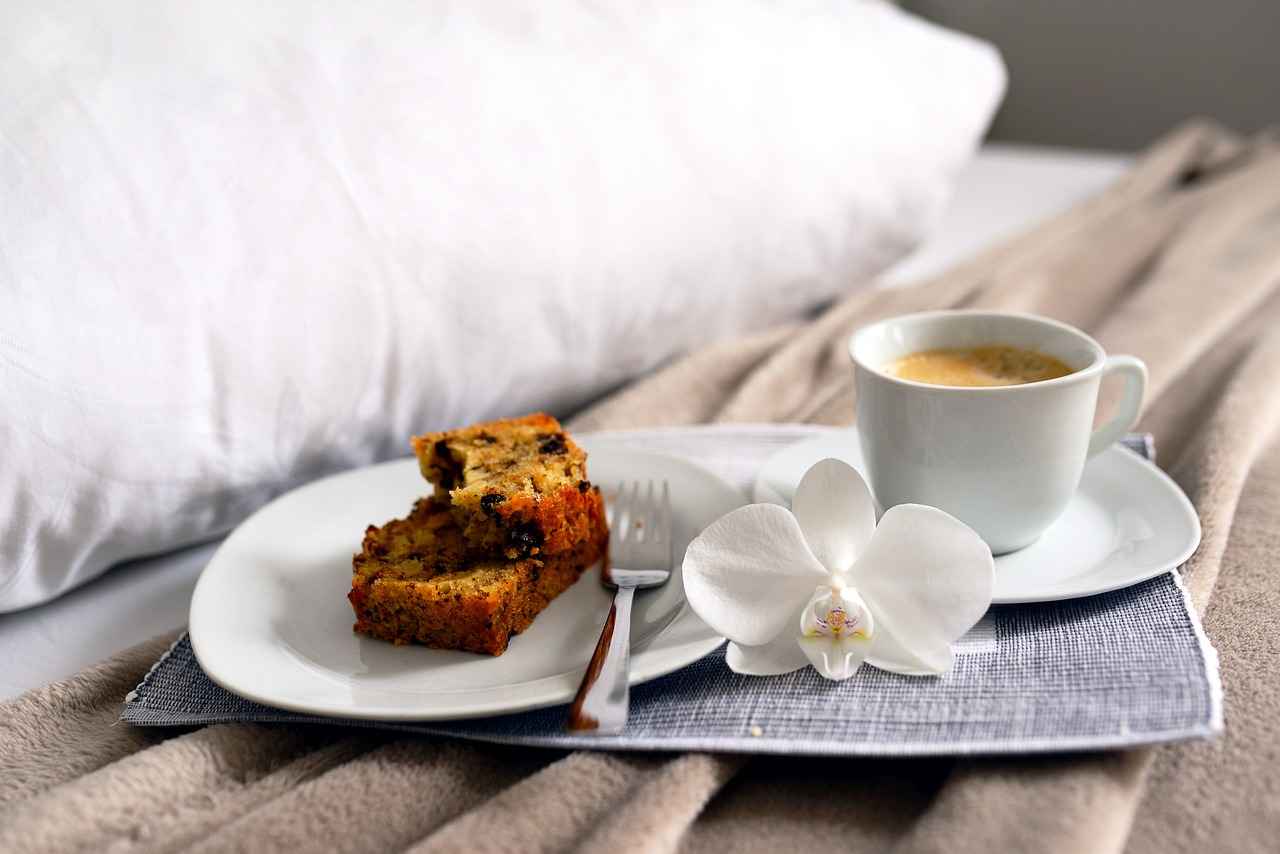
Functional Bed Designs for Small Spaces
As urban living spaces continue to shrink, the demand for functional bed designs that maximize space while maintaining style is more significant than ever. Homeowners and renters alike are seeking innovative solutions that cater to their need for both aesthetics and practicality. This article delves into the various types of functional bed designs that are perfect for small spaces, ensuring you can rest easy without compromising on style.
Functional bed designs are essential for those living in compact environments. They not only save space but also enhance the overall functionality of a room. By incorporating smart design elements, these beds can transform a small bedroom into a multi-functional living area.
- Storage Beds: These beds come equipped with built-in drawers or compartments, providing ample space to store linens, clothes, and other essentials. This design helps keep the room organized and clutter-free, making it ideal for small bedrooms.
- Murphy Beds: Also known as wall beds, Murphy beds can be folded up against the wall when not in use. This feature allows homeowners to free up floor space during the day, making the room more versatile for other activities.
- Loft Beds: Loft beds elevate the sleeping area, creating additional space underneath for a desk, seating, or storage. This design is particularly popular among students and young professionals who need to maximize their living area.
- Trundle Beds: Trundle beds feature a second mattress that can be stored underneath the main bed. This design is perfect for accommodating guests without requiring extra space, making it a practical choice for small homes.
When selecting a functional bed design, it’s crucial to consider the following:
- Room Layout: Assess the layout of your room to determine the best placement for your bed. Ensure that there is enough space to move around comfortably.
- Style and Aesthetics: Choose a design that complements the overall decor of your room. A stylish bed can serve as a focal point, enhancing the visual appeal of the space.
- Material and Durability: Opt for high-quality materials that not only look good but also withstand daily use. Consider options like solid wood or metal for durability.
In addition to choosing the right bed design, incorporating smart accessories can further enhance the functionality of a small bedroom. Here are some suggestions:
- Under-Bed Storage: Utilize storage bins or boxes that fit under the bed to keep items out of sight while maximizing space.
- Wall-Mounted Shelves: Install shelves above or beside the bed to store books, decorative items, or personal belongings, freeing up valuable floor space.
- Multi-Functional Furniture: Consider furniture that serves multiple purposes, such as a bench that doubles as storage or a nightstand with drawers.
In conclusion, as urban living continues to evolve, the need for functional bed designs that maximize space without sacrificing style is paramount. By exploring various options such as storage beds, Murphy beds, loft beds, and trundle beds, you can find the perfect solution for your small space. With thoughtful design considerations and the right accessories, you can create a comfortable and stylish bedroom that meets your needs.
Storage Beds
have emerged as a revolutionary solution for maximizing space in small bedrooms. With the increasing trend of urban living, where square footage is often limited, these beds provide a perfect blend of functionality and style. By incorporating built-in drawers or compartments, storage beds not only help keep your room organized but also enhance the overall aesthetic.
One of the primary benefits of is their ability to eliminate clutter. In a compact space, every inch counts, and having a dedicated area for storing items can significantly improve the room’s functionality. Whether it’s clothing, linens, or seasonal items, these beds offer ample storage options, allowing you to keep your bedroom tidy and visually appealing.
Moreover, come in various styles and designs, making them suitable for different interior themes. From sleek, modern designs that fit seamlessly into contemporary spaces to more traditional styles that can complement vintage decor, there is a storage bed for everyone. This versatility means that you do not have to sacrifice style for practicality.
In addition to aesthetic appeal, many storage beds are designed with durability in mind. High-quality materials such as solid wood, metal, and premium upholstery are commonly used, ensuring that these beds last for years. This durability is essential for those who value long-term investments in their furniture.
When choosing a storage bed, it’s important to consider the size and layout of your bedroom. A well-chosen bed can serve as a focal point while also providing necessary storage. For example, a queen-sized storage bed can offer generous space for two people while still accommodating drawers on either side for easy access to belongings.
Another key aspect to consider is the type of storage offered. Some storage beds feature side drawers, while others incorporate lift-up mechanisms that reveal spacious compartments underneath the mattress. Lift-up storage beds are particularly beneficial for those with limited floor space, as they allow for easy access to items without requiring additional clearance around the bed.
Furthermore, the integration of storage beds into your bedroom can promote a more organized lifestyle. With designated spaces for your belongings, it becomes easier to maintain cleanliness and reduce stress associated with clutter. This organizational benefit extends beyond just aesthetics; it can also contribute to a more peaceful and restful environment, crucial for a good night’s sleep.
As trends continue to evolve, remain a popular choice among homeowners looking to enhance their living spaces. They provide practical solutions that cater to the needs of modern life, balancing comfort and utility. Whether you are redecorating your bedroom or designing a new space, consider incorporating a storage bed to maximize your storage potential without compromising on style.
In conclusion, are an excellent investment for anyone seeking to optimize their bedroom space. With their ability to combine functionality with design, they offer a smart solution to the challenges posed by smaller living areas. Embrace the trend of storage beds and enjoy a clutter-free, stylish bedroom.
Murphy Beds
Murphy beds, also known as wall beds, are becoming increasingly popular in today’s modern living environments. These innovative sleeping solutions are designed to maximize space in multifunctional areas, making them an ideal choice for urban dwellers and those with limited square footage. By folding up into the wall when not in use, Murphy beds free up valuable floor space, allowing homeowners to create versatile living areas that can serve multiple purposes.
One of the main advantages of Murphy beds is their space-saving design. In smaller apartments or rooms, every square inch counts. Traditional beds can occupy a significant amount of space, limiting the functionality of a room. However, Murphy beds can be easily tucked away, transforming a bedroom into a living room, office, or even a workout space. This flexibility is especially beneficial for those who frequently host guests, as the bed can be quickly deployed when needed and stored away when not in use.
Another appealing aspect of Murphy beds is their variety of styles and designs. Modern Murphy beds come in a range of finishes, from sleek contemporary options to more traditional wooden designs. Many models also incorporate additional features, such as built-in shelving or desks, which enhance their functionality. This means that homeowners can choose a Murphy bed that not only fits their aesthetic preferences but also complements the overall design of their living space.
In addition to aesthetics and functionality, the ease of use is a significant factor that contributes to the popularity of Murphy beds. Many contemporary designs feature mechanisms that allow for smooth and effortless operation. With just a simple pull or push, the bed can be transformed from a wall-mounted unit into a comfortable sleeping area. This user-friendly design makes Murphy beds accessible for individuals of all ages.
Furthermore, Murphy beds are not just for small apartments; they can also be an excellent addition to larger homes. Homeowners can create dedicated guest rooms that double as home offices or craft spaces, ensuring that their living areas remain organized and clutter-free. By incorporating a Murphy bed, one can enjoy the benefits of a guest room without sacrificing valuable space in the home.
When considering a Murphy bed, it is essential to look for high-quality materials and construction. A well-built Murphy bed will not only provide durability but also ensure a comfortable sleeping experience. Many manufacturers offer customizable options, allowing buyers to select the right size, finish, and additional features that suit their needs.
In summary, Murphy beds represent a smart solution for those looking to optimize their living spaces. With their space-saving capabilities, stylish designs, and ease of use, they cater to a wide range of lifestyles and preferences. Whether you live in a compact city apartment or a spacious home, a Murphy bed can enhance your living environment by providing a practical and attractive sleeping option.
Frequently Asked Questions
- What are the latest trends in bed design?
The latest trends in bed design focus on innovative styles, materials, and functionalities. Minimalist beds with clean lines, vintage-inspired designs with ornate details, and smart technologies that enhance comfort are all the rage in 2023. These trends cater to modern aesthetics while ensuring comfort and practicality.
- How do I choose the right bed style for my bedroom?
Choosing the right bed style involves considering your personal taste and the overall theme of your bedroom. If you prefer simplicity, go for minimalist designs. For a touch of nostalgia, vintage-inspired beds can add charm. Think about your space and how the bed will fit into your existing decor to make the best choice.
- What materials are popular in bed design?
Popular materials for bed design include wood, metal, and upholstered fabrics. Eco-friendly options like reclaimed wood and organic fabrics are also gaining traction among consumers who value sustainability. These materials not only enhance the aesthetic appeal but also ensure durability and longevity.
- Are there functional bed designs for small spaces?
Absolutely! Functional bed designs like storage beds and Murphy beds are perfect for small spaces. Storage beds come with built-in drawers to help you stay organized, while Murphy beds fold up into the wall, freeing up valuable floor space when not in use. These designs maximize utility without sacrificing style.








